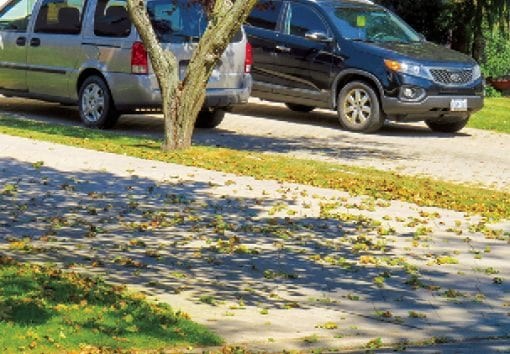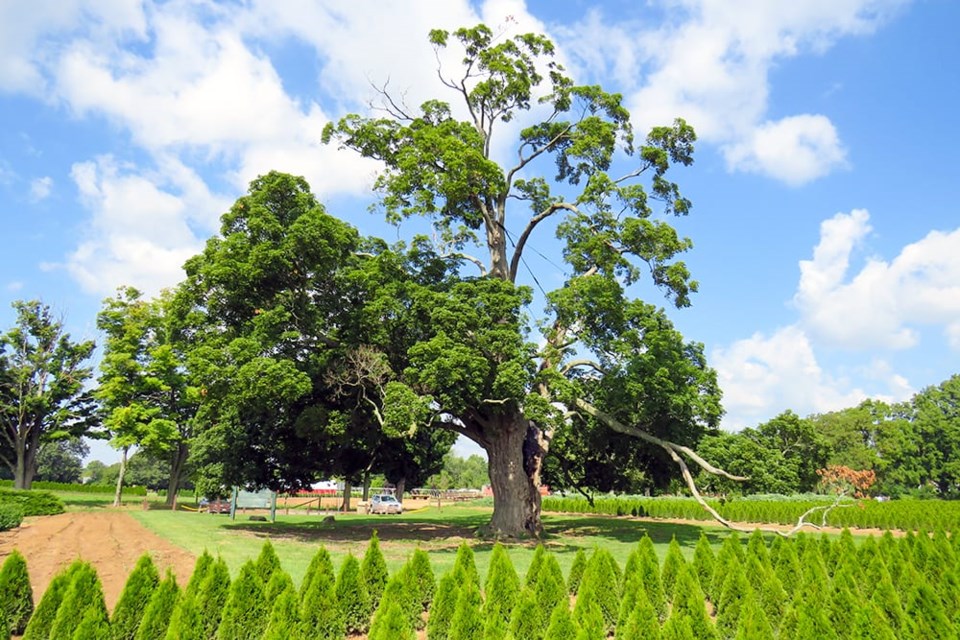Drought stress, fungus likely culprits behind early leaf drop
Forget arbitrary arboreal assassination—the last several weeks of high heat and scarce rainfall haven’t done any favours for our trees, either.
A tree’s foliage is often one of the first indicators that something is wrong. Are the leaves wilted, discolored, curled, or have brown spots? Is the tree partially defoliated?
Soil pH usually isn't a problem, as most maples tolerate a wide range of soil conditions. Maples prefer moist, well-draining soil, generously covered with two to four inches of mulch to conserve moisture.
Insecticides (especially organic ones) can usually do the trick…if the problem is aphids or spider mites. But if you don’t see insects on the bottom of leaves, or in the soil at the base of the tree, the likely culprit is either disease or improper hydration.
Anthracnose is a fungal disease that causes brown or black spots on leaves. Heavily infected leaves may drop prematurely, and swollen lesions might also develop on twigs and branches.
Leaf scorch is generally caused by weather factors such as high temperatures and dry winds, though it may also be caused by soil contaminants such as excessive phosphate fertilizers. A tree suffering from scorch will produce leaves with brown patches. Dry soil exacerbates the situation, so it is important to irrigate maples deeply and regularly during periods of drought.

Dr. Jim Willwerth, an assistant professor in the Department of Biological Sciences at Brock University, told the Voice that many trees, not just maples, will drop some leaves during periods of stress. 2020 has been both hot and dry, with precipitation lower than normal—our brown lawns are testament to this fact. Some maple species, he noted, can be more susceptible to dry periods, especially in soils with lower water holding capacity (such as the sandy soils in much of Pelham, that are also very well drained).
“Mature trees with large canopies can have a very high water demand, and will lose a lot of moisture through their leaves during transpiration,” said Willwerth. “A few short, heavy rains will not be enough to provide sufficient water for the daily requirements of a large tree, so it will drop leaves to reduce the overall stress.” This is particularly true of Silver Maples.
Willwerth also noted that there has been no shortage of construction around Pelham in recent years, which can cause issues such as compaction and damage to the root system that can lead to a tree being more susceptible to stress.
“I have also seen some of the non-native Norway Maples with some tar spot fungus on the leaves that can lead to some loss in leaves, especially if drought-stressed as well,” said Willwerth.
Tar spot, or Rhytisma acerinum, is not of major concern and will not kill trees. "It is mainly a cosmetic issue to look at and it happens every year in July and August," said NPCA spokesperson Erika Navarro. And how is Pelham's most famous maple faring? "We cannot comment or confirm the presence of any fungi on the Comfort Maple," said Navarro.
Remember that annual growth is one of the easiest ways to recognize if your maple is a happy tree. Immature maples should experience yearly growth in the form of new shoots and thicker branches, and leaves should always appear in abundance on healthy maples.


